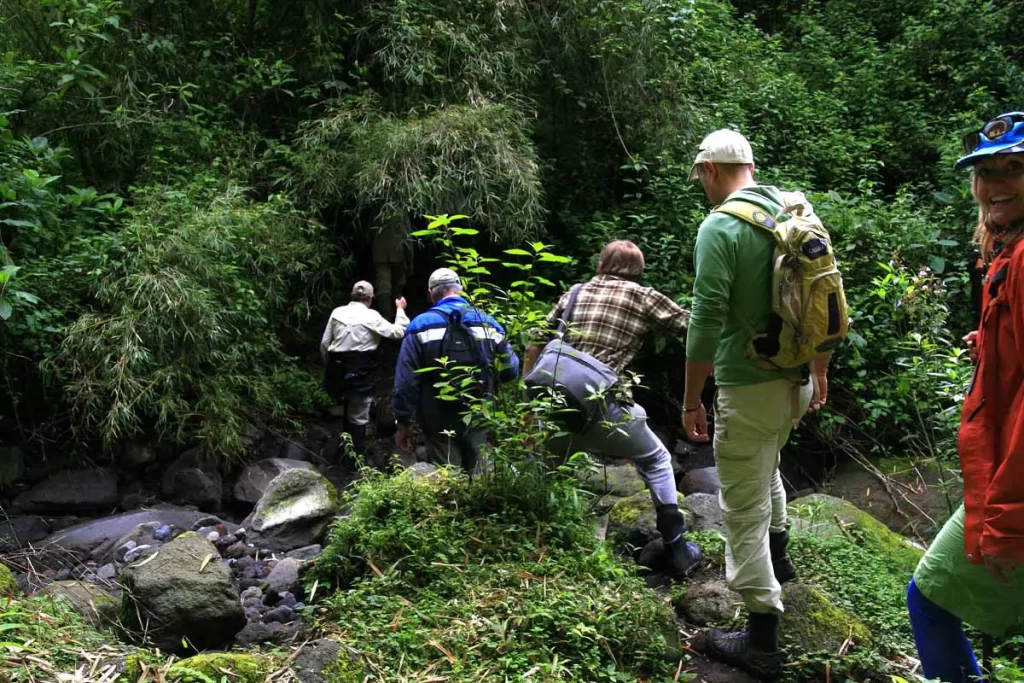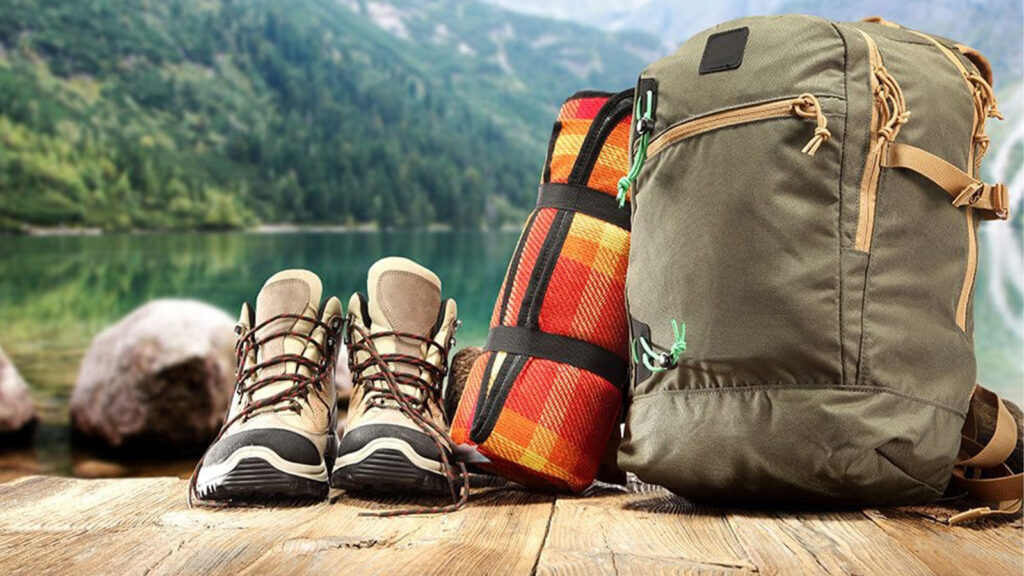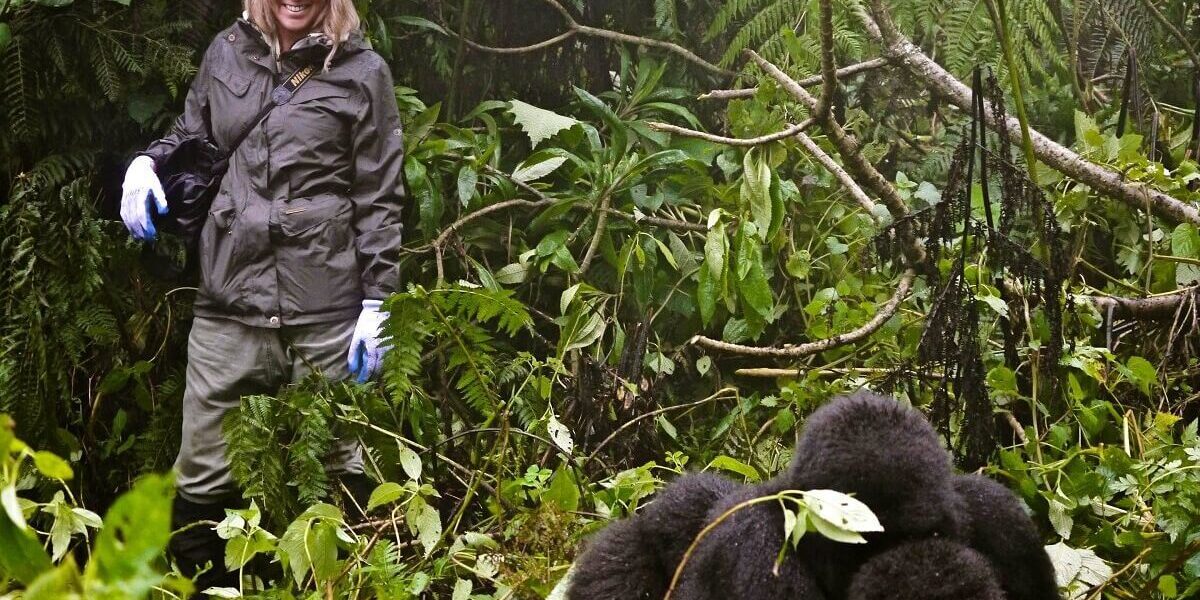Gorilla trekking in the lush, emerald rainforests of Uganda, particularly Bwindi Impenetrable and Mgahinga Gorilla National Parks, is a profoundly moving, once-in-a-lifetime experience. However, this adventure is far from a walk in the park. The trek can be strenuous, involving hours of hiking through dense, thorny vegetation, up steep, slippery slopes, and across muddy terrain. To fully enjoy your precious hour with the magnificent mountain gorillas, proper preparation is non-negotiable.
Here is your in-depth guide to the essential clothing and gear you must pack for your gorilla trekking adventure in Uganda.
1. Essential Clothing: Your First Line of Defense
The rainforest climate is unpredictable—expect cold, misty mornings, potential rain at any hour, and challenging ground conditions. Your clothing must prioritize protection, warmth, and moisture management.

| Item | Details & Why It’s Essential | Key Tip |
| Waterproof Hiking Boots | The single most important item. Choose sturdy, ankle-high boots with excellent grip and ensure they are waterproof. They provide vital ankle support on uneven trails and protect your feet from mud, water, and stinging nettles. | Break them in! Never wear brand-new boots on your trek to avoid blisters. |
| Long Trousers (Durable) | Essential for protection against thorny brush, stinging nettles, and insects like fire ants. Choose durable, quick-drying, and breathable material (synthetic blends or canvas). Avoid shorts. | Tuck them into your socks/gaiters to create a barrier against ants and insects crawling up your legs. |
| Long-Sleeved Shirt(s) | Provides essential protection for your arms from scratches, insect bites, and sun exposure under the canopy. Opt for quick-drying, moisture-wicking materials (not cotton). | Choose neutral colors like khaki, green, or light brown. Avoid bright colors, black, or blue, as they can attract tsetse flies. |
| Thick Hiking Socks | Pack several pairs of thick, long (mid-calf) wool or synthetic hiking socks. They provide cushioning, prevent blisters, and are crucial for tucking your trousers into. | Bring an extra pair in your daypack to change into if your first pair gets soaked. |
| Rain Jacket or Poncho | Rainfall can occur year-round. A lightweight, packable, and truly waterproof jacket or poncho is non-negotiable to keep your layers and gear dry. | Look for one that is breathable to prevent overheating during the hike. |
| Hardy Gloves (Gardening/Trekking) | This may seem unusual, but heavy-duty gardening gloves are a lifesaver! You will frequently grab vines, branches, and muddy roots for support on slippery slopes, and these protect your hands from thorns, sharp edges, and mud. | Rubber-palmed gardening gloves often offer the best grip and protection. |
| Sweater or Fleece Layer | Early mornings at altitude are chilly, and the forest can remain cool. A warm fleece or light thermal top is great for layering under your rain jacket. | |
| Gaiters (Optional but Highly Recommended) | These fabric covers wrap around your boots and lower leg. They prevent mud, water, small stones, and insects from entering your boots and help keep the bottom of your trousers clean. | If you don’t use gaiters, ensure your trousers are tightly tucked into your socks. |
| Wide-Brimmed Hat or Cap | For sun protection on your neck and face during clear spells, and to keep the rain off your face. |
Export to Sheets
2. Gear and Personal Essentials
These items ensure your comfort, safety, and ability to capture the memory-of-a-lifetime.

| Item | Details & Why It’s Essential | Key Tip |
| Waterproof Daypack | A small, comfortable backpack (20-30L) is needed to carry your water, lunch, rain gear, and camera. It must be waterproof, or you should use a waterproof rain cover. | Hire a porter! It supports the local community, and they carry your pack, freeing you up to focus on the trek. |
| Plenty of Drinking Water | The hike can be long and physically demanding. Carry at least 2-3 liters of water. A hydration pack (CamelBak) is excellent as it allows you to sip without stopping. | |
| High-Energy Snacks | Your lodge will provide a packed lunch, but bring energy bars, nuts, or dried fruit to sustain you during the trek. (Note: Eating is prohibited during the hour with the gorillas). | |
| Camera and Accessories (NO FLASH) | A good camera is essential, but flash photography is strictly forbidden as it can upset or agitate the gorillas. Bring a high-speed memory card. | Carry extra batteries and memory cards—you only get one hour, so don’t miss a shot! |
| Insect Repellent | The rainforest is home to mosquitoes and other biting insects. A DEET-based repellent is recommended for maximum protection. | Apply to all exposed skin before the trek. |
| Sunscreen and Lip Balm (SPF) | Necessary for the sun’s intensity, even under the canopy cover. | |
| Trekking Poles/Walking Stick | Highly recommended for stability, balance, and reducing strain on your knees, especially on steep ascents and descents. | Wooden walking sticks are often provided free of charge at the park headquarters or can be hired from porters. |
| Personal First-Aid Kit | Include blister treatment (e.g., moleskin), pain relievers, antiseptic cream, personal prescription medications, and anti-diarrhea tablets. | |
| Face Mask (Surgical/N95) | Gorillas are highly susceptible to human respiratory illnesses. You will be required to wear a mask for the duration of the one-hour encounter to protect the primates. | Pack at least two for the trek day. |
| Hand Sanitizer/Wet Wipes | Essential for hygiene, especially before eating your packed lunch. | |
| Travel Documents | Your valid passport, Yellow Fever Certificate, and, most importantly, your Gorilla Trekking Permit. Keep these in a waterproof bag within your daypack. |
Export to Sheets
3. Final Tips for Packing
- Go Light: Airlines often have strict baggage weight limits for domestic or charter flights in Uganda (typically 15-20kg). Keep your daypack as light as possible, as you’ll be carrying it for hours.
- Layering is Key: The temperature can fluctuate wildly. Dress in thin, technical layers that you can easily add or remove.
- Respect the Rules: Avoid wearing camouflage clothing, as it’s reserved for military use. Also, avoid animal prints, which could potentially alarm the gorillas. Stick to neutral, earth-toned colors.
- Support Porters: Even if you feel fit, consider hiring a porter. They are inexpensive, often locals who rely on this income, and they provide invaluable help by carrying your bag and assisting you on difficult sections of the trail.
By meticulously preparing with this essential packing list, you will be equipped to tackle the demands of the rainforest, ensuring your focus remains entirely on the awe-inspiring moment you finally come face-to-face with Uganda’s majestic mountain gorillas.
Planning a gorilla tour in Uganda this season- we at Mumwe Safaris will be more than happy to offer you our services. Simply contact us now by sending an email to [email protected] or call us now on +256-700135510 to speak/ chat with reservations team.

